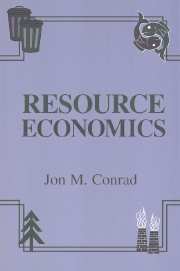Book contents
3 - The Economics of Fisheries
Published online by Cambridge University Press: 05 June 2012
Summary
Introduction and Overview
In this chapter we will explore in greater detail the general renewable resource model used to introduce the method of Lagrange multipliers in Chapter 1. This model will serve as a vehicle to examine traditional and “bioeconomic” management policies. Before embarking on this more detailed excursion we will construct some models that provide insight into why fisheries are chronically overfished. Overfishing results in depleted stocks that can support only a fraction of what might be harvested if stocks were maintained at higher levels. These models are referred to as open access models, and they show, graphically, what happens when there are unregulated access and harvesting of a common property resource. By a common property resource we mean a resource that is not recognized as “private property” until it is captured. The inability of traditional management policies to avert the tragedy of overfishing has recently led to a willingness among coastal nations to experiment with bioeconomic or “incentive-based” policies, such as Individual Transferable Quotas (ITQs). Although the jury is still out on the effectiveness of ITQs the initial results seem promising. A discussion of the experience with these policies in New Zealand, Australia, Canada, and the United States will close out this chapter.
Net Growth
In equation (1.1) we introduced a difference equation to describe the change in a renewable resource from period t to period t + 1.
- Type
- Chapter
- Information
- Resource Economics , pp. 32 - 58Publisher: Cambridge University PressPrint publication year: 1999



